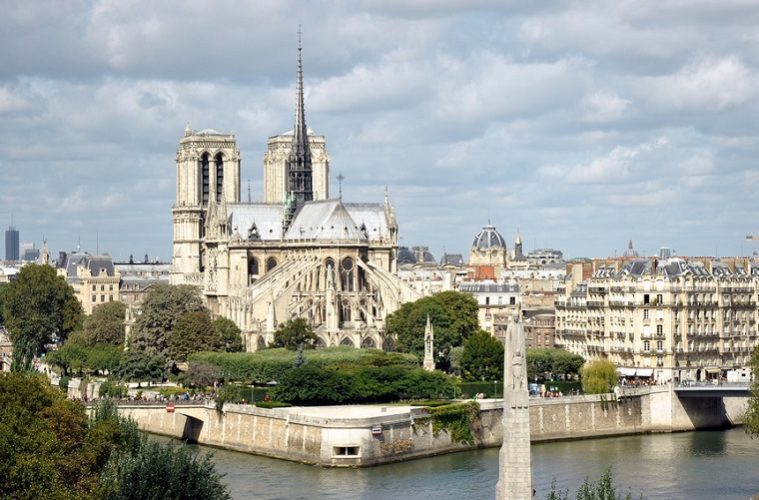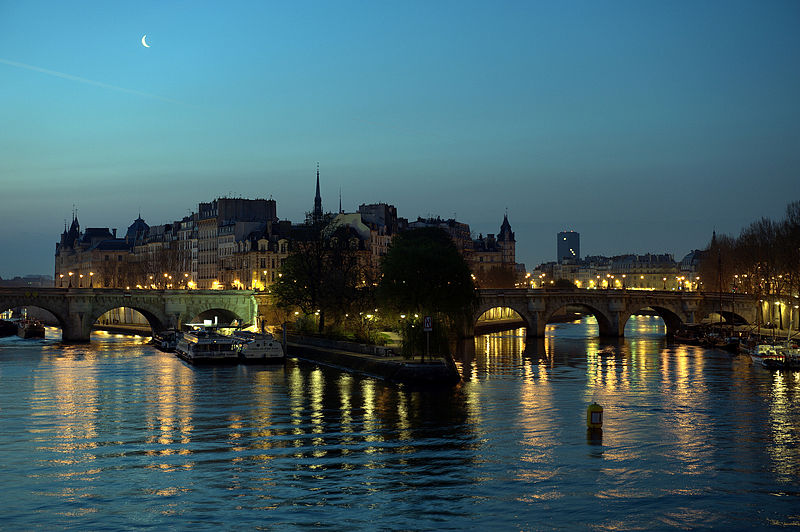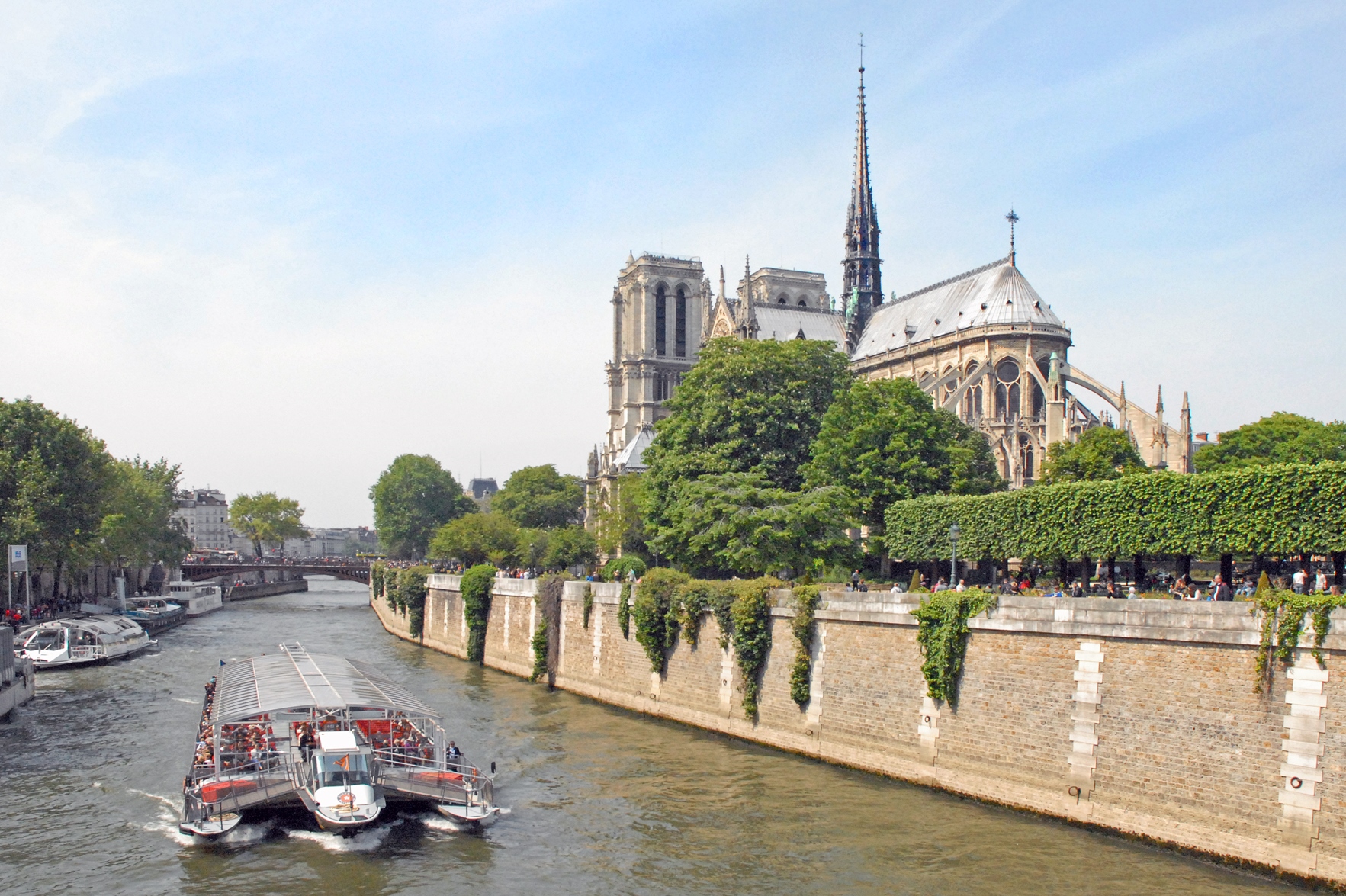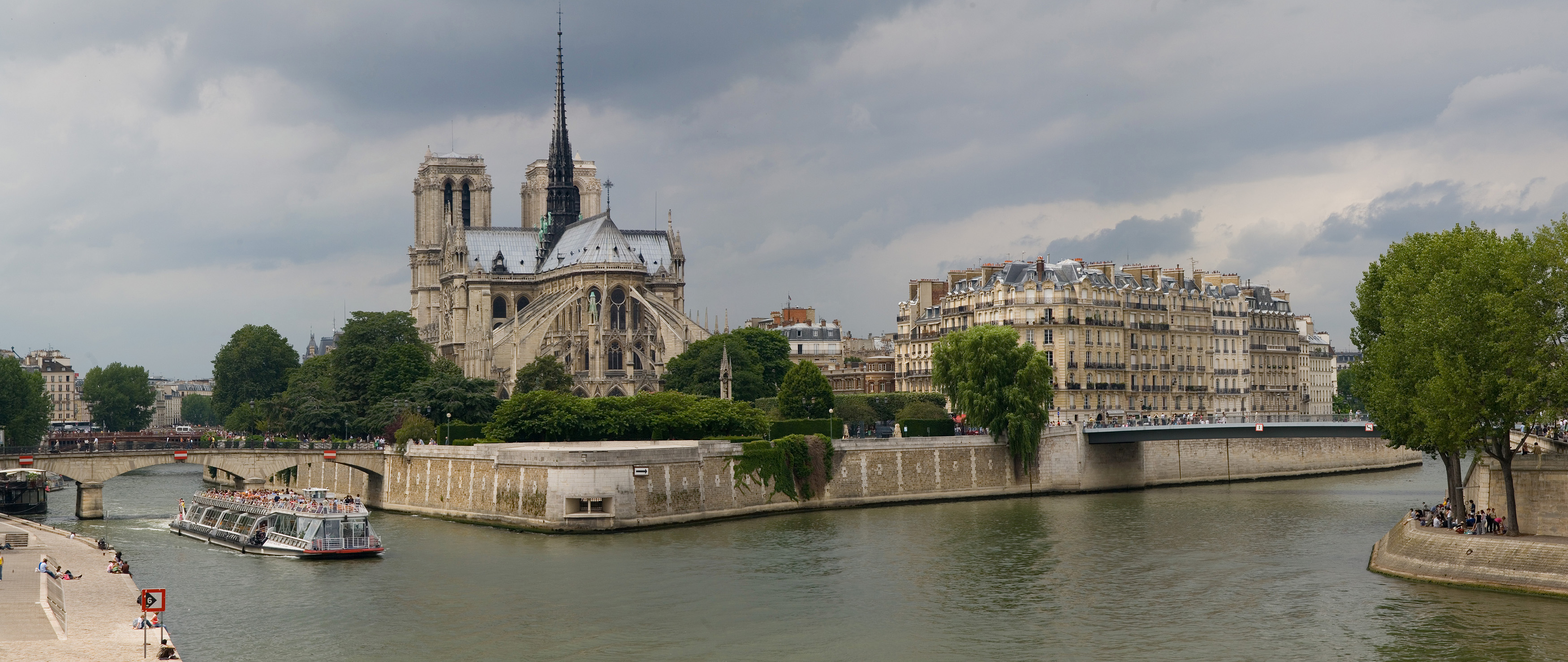As the Seine flows through the centre of Paris, it washes the banks of one of two remaining natural islands. Ile de la Cite, or Island in the Seine, is home to Notre-Dame, one of the most famous cathedrals in the world, and referred to as the epicentre of Paris.
See
Within the Palais de Justice is the Gothic-period Sainte Chapelle church, possibly the most beautiful church interior in Paris. Its intricate stained glass tells the entire story of Christian history, from the Book of Genesis to the coming of Christ.
Unlike many Gothic cathedrals, which took generations to construct, St Chapelle was designed by a single architect and completed in 5 years. It was built for King Louis IX in the 13th century, and the sole later addition is the “Flamboyant Gothic Rose Window.
To make your experience of the beauty of the high arched ceilings, patterned walls and exquisite stained glass truly magical, time your visit to coincide with a chamber music concert.
Feel
At the upriver end of the island is a memorial to the 200,000 people deported from Vichy France to Nazi concentration camps during World War II. The Mémorial des Martyrs de la Déportation features inscriptions from French poets, authors, and Resistance member Robert Desnos, himself deported. The last stanza of his poem “The Heart that Hated War” is inscribed on the walls of the memorial:
I have dreamt so very much of you,
I have walked so much,
Loved your shadow so much,
That nothing more is left to me of you.
All that remains to me is to be the shadow among shadows
To be a hundred times more of a shadow than the shadow
To be the shadow that will come and come again into your sunny life.
A Guardian reader described it as “a place for tears and quiet contemplation; a refuge from the crowds and a reminder of one of the darkest episodes in recent history“, but this largely unnoticed memorial strong evokes emotions in all who visit the Tomb of the Unknown Deportee, a “living memory of the 200,000 French deportees sleeping in the night and the fog, exterminated in the Nazi concentration camps“.
Hear
Music dedicated to Notre Dame (Our Lady, Mary, mother of God) has been heard in le Cathédrale Notre-Dame de Paris for 1500 years, and this auditory worship is available to anyone visiting during a service, held daily (the cathedral is open every day of the year). Regular parishioners will attend the cathedral early, to claim their preferred seats, but there are plenty available. It’s worth considering that, even during mass, tourists will be milling about and creating noise, which can be distracting. A top tip is to sit closer to the front, where you will be able to enjoy the service with less disturbance, and there’s normally a special entrance for those wishing to attend mass, which doesn’t require you to queue.
Smell
Paris of yesteryears was plagued by unpleasant olfactory odours as was every major city. Today, one of Paris’ most famous flower markets, the Marche aux Fleurs, can be found on the edge of Ile de la Cite in a cluster of green pavilions. Gardening accessories, Provence lavender, seeds and beautiful blooms are free to browse as you weave through the fragrant walkways between stalls.
Taste
Paris gastronomy is world-renowned, but no visit to Paris should pass without consuming un croque monsieur and a bowl of the warming, satisfying classic, French onion soup. Place Dauphine is a beautiful and calm residential park in one of the few remaining residential areas of the island. Quiet bistros and cafes can be found among the trees and cobblestones, and it’s the perfect place to savour French cuisine, on this most beautiful of islands.
Ile de la Cite
I hope you enjoyed my article about Ile de la Cite






